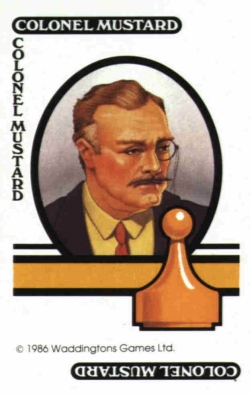Speculation about the source of the E. coli 0157:H7 is still up in the in air, but it might make for an exciting parlor game. Anyone up for a game of Clue?
“So, how the hell does cow shit (E. coli O157:H7) get into Nestles’ Toll House cookie dough?” wonders Seattle attorney Bill Marler, in his blog.
“For starters, we don’t really know yet whether raw cookie dough is the source of this E. coli outbreak,” replied nutritionist and writer Marion Nestle in Food Politics. “It could be something else, and Nestlé will have recalled 300,000 cases purely out of precaution. The most likely source of bacterial contamination is eggs, but eggs typically carry Salmonella, not E. coli O157:H7. And besides, the eggs in raw cookie dough are undoubtedly pasteurized, which ought to kill any bacteria that happen to be present.”
More than 65 people in 28 states have been made ill since March, according to the Food and Drug Administration, and 25 of those were hospitalized. No one has died, but seven people have suffered hemolytic uremic syndrome, a type of kidney failure, as a result.
For the record, Nestlé does use pasteurized eggs in its cookie dough, according to Edie Burge, a spokesperson for the company in Glendale, Calif.
What’s significant about this particular outbreak is the contamination, itself. E. coli, as Marler so eloquently noted, is typically found in meat. The major ground beef recalls over the past several years have almost all been linked to E. coli contamination after fecal-contaminated muscle tissue is ground in with meat from other animals.
“A single fast food hamburger now contains meat from dozens or even hundreds of different animals,” journalist Eric Schlosser wrote in Fast Food Nation. Of course, we’re not talking about hamburger, here. The ingredients for Nestle Chocolate Chip Toll House cookie dough certainly don’t list any ingredients that could raise suspicion, except for the eggs (Thanks to Fooducate for the ingredients listing).
“Bleached Enriched Flour, Flour, Niacin, Reduced Iron, Thiamine Mononitrate, Riboflavin, Folic Acid, Nestle Toll House Morsels, Semi-Sweet Chocolate, Sugar, Chocolate, Cocoa Butter, Milkfat, Soy Lecithin, Vanillin – an Artificial Flavor, Natural Flavor, Sugar, Margarine, Soybean Oil, Partially Hydrogenated Soybean Oil, Water, Salt, Whey, Soy Lecithin, Mono-, Diglycerides, Artificial Flavor, Beta-Carotene Color, Vitamin A Palmitate Added, Water, Eggs, Molasses, Baking Soda, Salt, Vanilla Extract, Vanillin – an Artificial Flavor.”
A Dutch study published in 2002 even suggests that milk fats may inhibit growth of food-borne pathogens, although it noted that E. coli was less vulnerable to milk fat’s bactericidal properties. Vegetable oils, too, can inhibit growth of pathogens. Other ingredients, such as water, are being tested by the FDA.
It’s possible, then, that contaminated eggs somehow made it into the product, or that the contamination came from in house. It’s too early to speculate, as Burge noted, and the investigation at Nestle’s Danville, Va., plant is really just getting underway. Until then, it could very easily have been Col. Mustard in the library – with the candlestick, no doubt.


Leave a comment